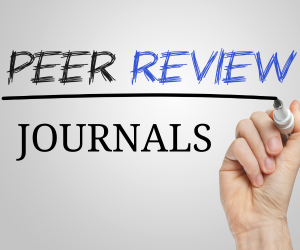COVID19 & FUO: A Case of an Invasive COVID19 Presented as Unexplained Prolonged Fever
DOI:
https://doi.org/10.48047/najee314Keywords:
COVID-19, FEVER OF UNKNOWN ORIGIN,Abstract
As the Corona virus disease-2019 (COVID-19) is continuing to challenge health care professionals all around the world, we continue to study the clinical course of the disease in face of the diverse clinical presentaions of the infection, and as such, it is crucial to share knowledge and experience regarding the behavior of this disease and the potential treatment options.
Caused by severe acute respiratory syndrome Coronavirus 2 (SARS-CoV-2), the clinical presentation of COVID-19 is now well recognized. Common symptoms of the disease include fever, cough, fatigue, dyspnea, and impaired smell and taste sensations. Typical laboratory findings include high levels of C-Reactive protein (CRP), elevated liver enzymes, and increased levels of D-Dimer and Prothrombin time. In addition, leukopenia and lymphopenia frequently occur and correlate with disease severity. Definite diagnosis is made by positive PCR testing of naso-pharyngeal swab for SARS-CoV-2.
While fever is the most commonly reported symptom of COVID-19, so far there were no reported cases of fever of unknown origin (FUO) related to COVID-19. However, it is appealing to assume that the occurrence of COVID-19-related FUO could be underestimated, as emerging evidence implicates COVID-19 in prolonged febrile illnesses due to deep tissue involvement, even while patients have repetitive negative results of the apparently diagnostic naso-pharyngeal swabs for the virus.
We here present, for the first time in literature, a case of FUO related to COVID-19. It was important to make the diagnosis, as the disease was progressive and resistant to most acceptable treatment regimens, and the cure was possible only after applying alternative treatments than the usual regimens being used in treating common COVID-19 cases.
Downloads
References
Zhou Y, Li W, Wang D, Mao L, Jin H, Li Y, Hong C, Chen S, Chang J, He Q, Wang W, Hu B. Clinical time course of COVID-19, its neurological manifestation and some thoughts on its management. Stroke Vasc Neurol. 2020 Jun;5(2):177-179. doi: 10.1136/svn-2020-000398. Epub 2020 May 4.
Guan WJ, Ni ZY, Hu Y, Liang WH, Ou, CQ, He JX, Liu L, Shan H, Lei CL, Hui D, Du B, Li LJ, et al. Clinical Characteristics of Coronavirus Disease 2019 in China. April 30, 2020. N Engl J Med 2020; 382:1708-1720, doi: 10.1056/NEJMoa2002032.
Stephen A. Lauer, MS, PhD*, Kyra H. Grantz, BA*, Qifang Bi, MHS, Forrest K. Jones, MPH, Qulu Zheng, MHS, Hannah R. Meredith, PhD, Andrew S. Azman, PhD, Nicholas G. Reich, PhD, Justin Lessler, PhD. The Incubation Period of Coronavirus Disease 2019 (COVID-19) From Publicly Reported Confirmed Cases: Estimation and Application. May 5, 2020, Annals of internal medicine, doi: 10.7326/M20-0504
Huang C, Wang Y, Li X, et al. Clinical features of patients infected with 2019 novel coronavirus in Wuhan, China. Lancet. 2020 Feb;395:497–506. doi:10.1016/S0140-6736(20)30183-5
Wang D, Hu B, Hu C, et al. Clinical Characteristics of 138 Hospitalized Patients With 2019 Novel Coronavirus-Infected Pneumonia in Wuhan, China. JAMA. 2020 Feb 7.;323(11):1061–9. doi:10.1001/jama.2020.1585
Bianco M R, Modica D M, Drago G D, Azzolina A, Mattina G, De Natale M, Rossi G, Amata Ma, Canzoneri, G, Manganaro G, Di Gregorio F, Russo R, Pricoco S, Saita V, Allegra E. Alteration of Smell and Taste in Asymptomatic and Symptomatic COVID-19 Patients in Sicily, Italy. Ear Nose Throat J ; 100(2_suppl): 182S-185S, 2021 Apr. doi: 10.1177/0145561320981447
Shukha Y, Makhoul K, Abu-Elhija J, Hayek T, Hamoud S. "A Case of Severe COVID-19 Pneumonia Diagnosed in Bronchoscopy with Negative Repeated Nasopharyngeal Swabs." Journal of Medical Cases [Online], 12.6 (2021): 217-219. Web. 10 Apr. 2021, doi: 10.14740/jmc3679
Zhou F, Yu T, Du R, et al. Clinical course and risk factors for mortality of adult inpatients with COVID-19 in Wuhan, China: a retrospective cohort study. Lancet, 2020 march;395:1054–62. doi.org/10.1016/S0140-6736(20)30566-3
Yang X, Yu Y, Xu J, et al. Clinical course and outcomes of critically ill patients with SARS-CoV-2 pneumonia in Wuhan, China: a single-centered, retrospective, observational study. Lancet Respir Med. 2020 Apr; 8(5):475–81. doi: 10.1016/S2213-2600(20)30079-5
Wu C, Chen X, Cai Y, et al. Risk Factors Associated With Acute Respiratory Distress Syndrome and Death in Patients With Coronavirus Disease 2019 Pneumonia in Wuhan, China. JAMA Intern Med. 2020 Mar 13;180(7):934–43. doi:10.1001/jamainternmed.2020.0994
Ling Ning, 1 Lei Liu, 1 Wenyuan Li, 1 Hongtao Liu, 1 Jizhou Wang, 1 Ziqin Yao, 1 Shengyu Zhang, 1 Desheng Zhao, 1 Björn Nashan, 1 Aizong Shen, 1 Lianxin Liu, 1 and Lei Li. Novel coronavirus (SARS‐CoV‐2) infection in a renal transplant recipient: Case report. Am J Transplant. 2020 May 8 : 10.1111/ajt.15897. doi: 10.1111/ajt.15897
Fishman JA and Grossi PA. Novel Coronavirus‐19 (COVID‐19) in the immunocompromised transplant recipient: #Flatteningthecurve. Am J Transplant. 2020 Apr 12 : 10.1111/ajt.15890. doi: 10.1111/ajt.15890
Javier Carbajo-Lozoya,a Marcel A. Müller,b Stephan Kallies,b Volker Thiel,c,d Christian Drosten,b and Albrecht von Brunn. Replication of human coronaviruses SARS-CoV, HCoV-NL63 and HCoV-229E is inhibited by the drug FK506. Virus Res. 2012 Apr; 165(1): 112–117. Published online 2012 Feb 10. doi: 10.1016/j.virusres.2012.02.002.
Jasper Fuk-Woo Chan,1,2,3,4 Yanfeng Yao,5 Man-Lung Yeung,2 Wei Deng,5 Linlin Bao,5 Lilong Jia,2 Fengdi Li,5 Chong Xiao,5 Hong Gao,5 Pin Yu,5 Jian-Piao Cai,2 Hin Chu,2 Jie Zhou,2 Honglin Chen,1,2,3,4 Chuan Qin,5 and Kwok-Yung Yuen. Treatment With Lopinavir/Ritonavir or Interferon-β1b Improves Outcome of MERS-CoV Infection in a Nonhuman Primate Model of Common Marmoset. J Infect Dis. 2015 Dec 15; 212(12): 1904–1913. Published online 2015 Jul 21. doi: 10.1093/infdis/jiv392.
Downloads
Published
Issue
Section
License
Copyright (c) 2025 Yousef Shukha, Firas Srour, Shadi Hamoud (Author)

This work is licensed under a Creative Commons Attribution 4.0 International License.
You are free to:
- Share — copy and redistribute the material in any medium or format for any purpose, even commercially.
- Adapt — remix, transform, and build upon the material for any purpose, even commercially.
- The licensor cannot revoke these freedoms as long as you follow the license terms.
Under the following terms:
- Attribution — You must give appropriate credit , provide a link to the license, and indicate if changes were made . You may do so in any reasonable manner, but not in any way that suggests the licensor endorses you or your use.
- No additional restrictions — You may not apply legal terms or technological measures that legally restrict others from doing anything the license permits.
Notices:
You do not have to comply with the license for elements of the material in the public domain or where your use is permitted by an applicable exception or limitation .
No warranties are given. The license may not give you all of the permissions necessary for your intended use. For example, other rights such as publicity, privacy, or moral rights may limit how you use the material.







